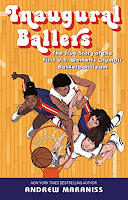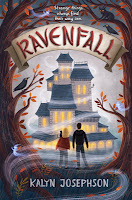Magoon, Kekla. The Flag Never Touched The Ground: America's Brave Black Regiment in Battle (True Adventures)
September 6th 2022 by Pushkin Press
E ARC provided by Edelweiss Plus
William Harvey Carney's father had managed to escape slavery and had made his way to New Bedford, Massachusetts, promising to send for his family. In October of 1859, William arrived in that town after a long journey from the South. He managed to start his new life, adn eventually worked on whaling boats. When the Civil War started, he and his best friend, Chester, signed up for the 54th Regiment, the Massachusetts Volunteers of African Descent even though his father thought he was too soft to go to war. They were promised $100 bounty as well as pay of $13 a month, and started their brief training right away. While their white commander was from an abolitionist family and treated them fairly, there was a lot of racist treatment. For example, they were given less pay than they had been promised, but luckily mounted a successful protest. Also, if Black soldiers were captured in the South, they could be returned to slavery, and their commanders would be killed rather than taken prisoner. Conditions during the Civil War were never good, and when the regiment was part of the attack on Fort Wagner in the South, the battle was brutal. Even though he was injured and thought he saw Chester killed, Carney refused to let the flag fall and helped many of the other soldiers get through the fighting.
Strengths: This was on the shorter side and even included some good illustrations. While most of my readers who want to read books about war are strong readers, it's good to have a variety of levels of books, and there hasn't been many new Civil War books lately. There are lots of good details about equipment, training, and conditions in battle that are just perfect, and there has been very little about Black soliders during this conflict. There are several other books in this series that I will have to investigate.
Weaknesses: This is being published in paperback, and the prebind will set you back about $20.
What I really think: This reminded me a little of Avi's Revolutionary War title, The Fighting Ground, and will definitely be popular with my readers.
Weaknesses: This is being published in paperback, and the prebind will set you back about $20.
What I really think: This reminded me a little of Avi's Revolutionary War title, The Fighting Ground, and will definitely be popular with my readers.
September 6th 2022 by Roaring Brook Press
E ARC provided by Edelweiss Plus
Born in 1934 to parents who were in their teens when the Spanish left Puerto Rico and the US took control, Roberto had an early interest in baseball. As a Black Puerto Rican, he had experienced some racism, even though at the time, many Puerto Ricans liked to pretend that people from all backgrounds were treated the same. His older brother Matino played in a top amateur league. Roberto was a teenager when Jackie Robinson was the first Black baseball player in the major leagues, which gave him hope that he, too, would be able to play ball. He played in winter league teams while he was still in high school, and tried out other sports as well, and signed with the Cangrejeros. While playing there, he was scouted by the Brooklyn Dodges in 1952 and was signed to their minor league team. He did well, although he often struggled with his health because of injuries he recieved in a car accident, and eventually came to play with the Pittsburgh Pirates, and also enlisted in the US Marine Corps Reserve, where he spent six years while still playing baseball. Conscious of the poverty in which he grew up, Roberto worked on many charitable initiatives. Nicaragua was having many problems, and it was on a flight to deliver supplies to that country in 1972 that his plane crashed and he was killed. He was fast tracked into the Baseball Hall of Fame, and in the fifty years since his death has often been remembered as a ground breaking ball player, philanthropist, and Hispanic cultural icon.
Strengths: This short (112 pages) biography has some illustrations, and als includes historical information about Puerto Rico, the different people who live there, and the state of racial discrimination in both Puerto Rico and in the mainland US. This is very helpful in understanding Clemente's career. There are several sidebars such as "A brief history of slaevry in Puerto Rico" that are very helpful. There is plenty of baseball descriptions, and also a good overview of Clemente's life and legacy.
Weaknesses: After the description of his death, there is a chapter that goes back to 1955 and then followed Clemente's baseball career. This was a bit jarring, and I wish the information in that chapter had been inserted into the earlier chapters. I did like the chapter on Clemente's legacy. I wouldn't have minded a few more photographs.
What I really think: While I'm glad to see this line of Hispanic Star books, I wish we would see historical figures who haven't already had middle grade biographies written about them. How about Lou Castro? Still, if your Clemente biography needs replacing, this is a great updated choice that includes information about Puerto Rico and racial issues that I've not seen included in earlier books.
Weaknesses: After the description of his death, there is a chapter that goes back to 1955 and then followed Clemente's baseball career. This was a bit jarring, and I wish the information in that chapter had been inserted into the earlier chapters. I did like the chapter on Clemente's legacy. I wouldn't have minded a few more photographs.
What I really think: While I'm glad to see this line of Hispanic Star books, I wish we would see historical figures who haven't already had middle grade biographies written about them. How about Lou Castro? Still, if your Clemente biography needs replacing, this is a great updated choice that includes information about Puerto Rico and racial issues that I've not seen included in earlier books.





.jpg)










.png)







